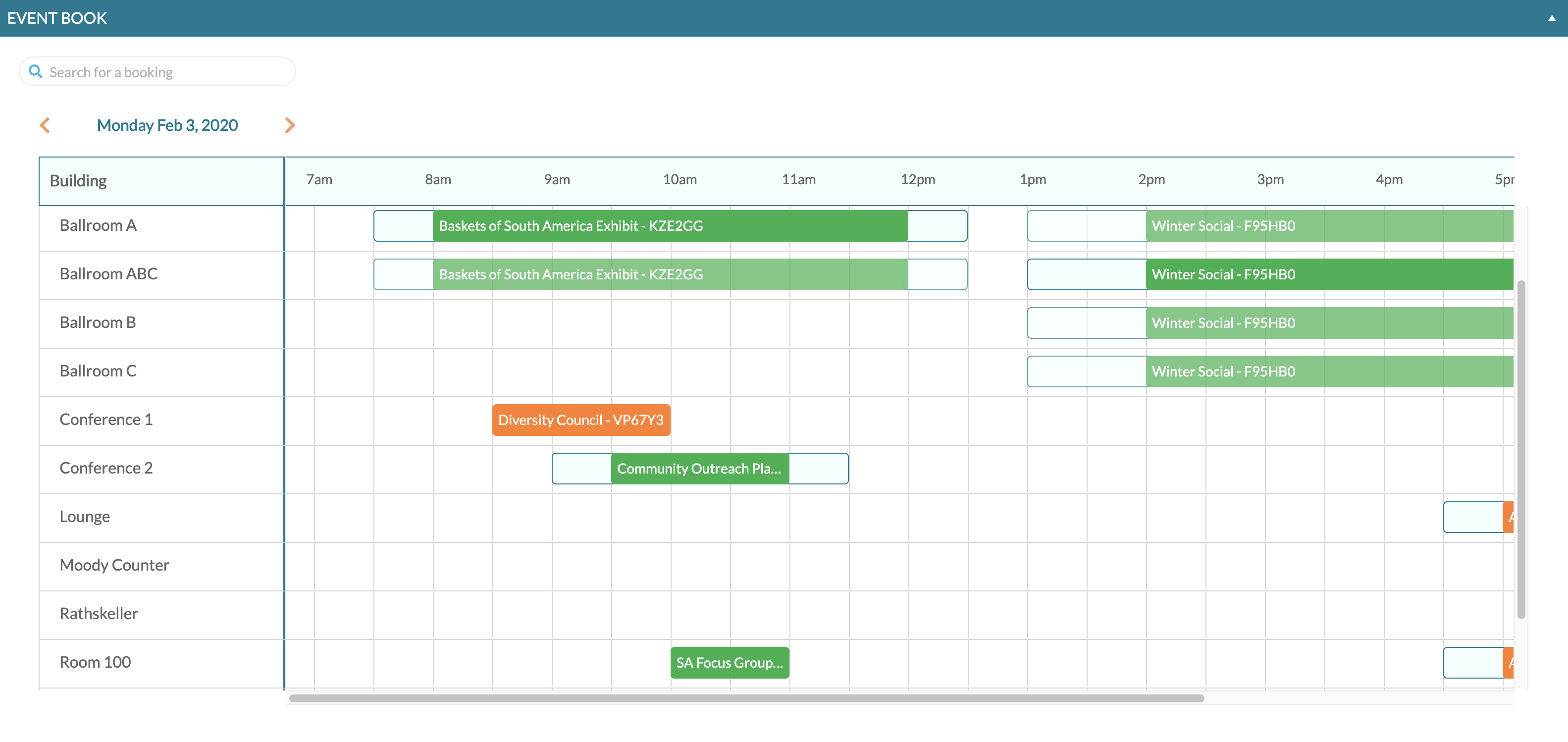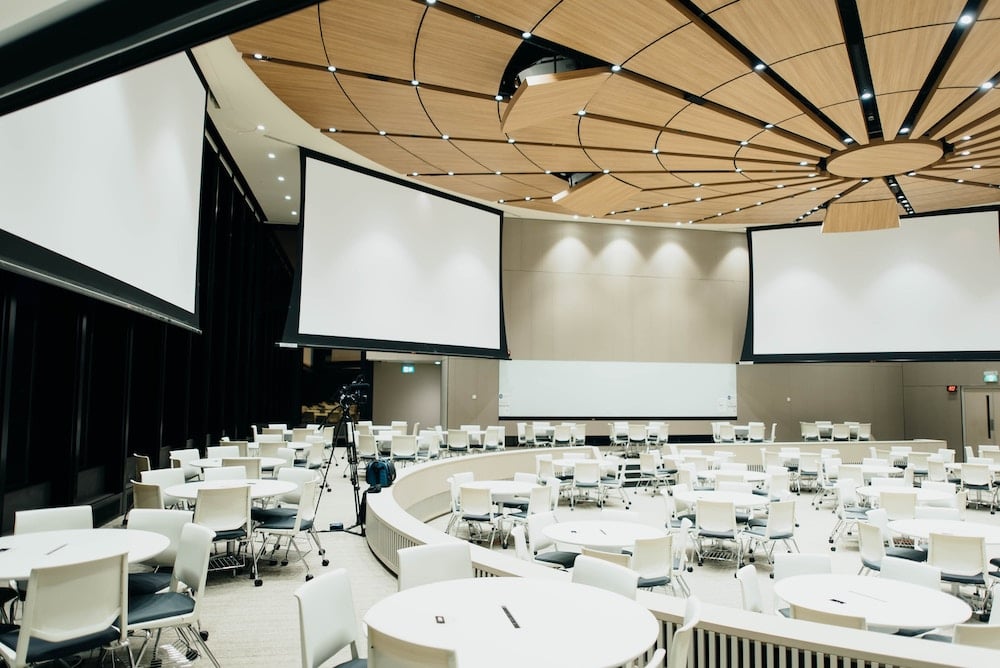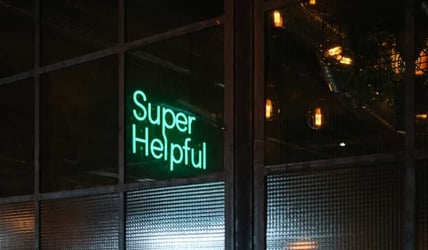The way tables and chairs are arranged for your event will have a huge impact on participant engagement, learning and enjoyment. In this article we will discuss the most common meeting and event seating styles along with where they are best used to help you in creating amazing events.
Before we look at each specific room arrangement there are two general ideas to keep in mind, Room size and how much you want your participants to interact.
Room Size - The way tables and chairs are arranged will affect how many you can fit into the room. Having a room that is too big or too small for a given number of guests and the seating arrangement will detract from your guests experience
Participant Interaction - Seating arrangement will also have an effect on the interaction between the presenter and other participants as well as between the participants themselves. If the participants do not know each other well there will always be some resistance to interaction. The way your participants are seated in relation to one another can either increase or decrease the barrier to interaction. In general, when participants are seated in a way where they are facing each other more interaction will result.
Let’s look at eight common room seating arrangements and how to use them effectively.
Banquet
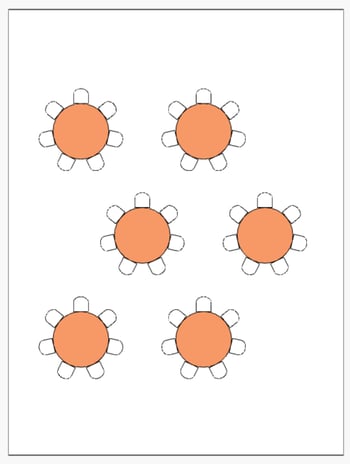
The banquet style room setup includes a round table with chairs placed around the perimeter. The attendees all face each other while seated at the table.
Pros
- Encourages interaction
- Great for events with food since the participants have a place to eat
- Maximizes use of space since tables are used to maximum capacity
Cons
- While great for interacting with participants at the same table it can isolate attendees from those sitting at other tables.
- If there is a presentation or something that requires attendees to focus on a point in the room, some of the participants will be facing away from the presentation.
Best For
Banquet style seating is best for networking sessions where the participants get to know each other. It is also great for weddings, evening events and seated meals.
Circle of Chairs
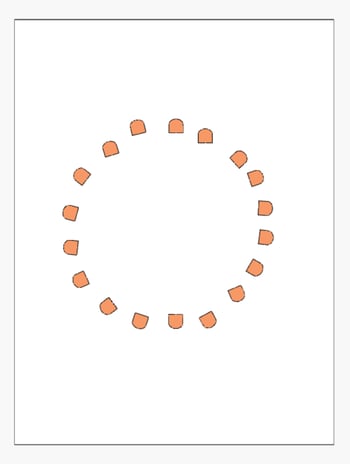
Chairs are placed in a circle in the center of the room with attendees facing the center.
Pros
- Minimal furniture usage since it doesn’t require tables
- Everyone can see each other
- Maximizes engagement and encourages everyone to get involved
- minimize status differences due to seating position
Cons
- Not the best for presentations
- May require a strong facilitator to keep things moving effectively
Best For
Circular setups are best for networking events, team building and workshops.
Classroom
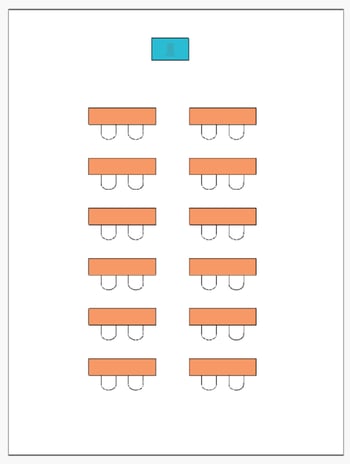
Tables and chairs are arranged in parallel rows facing the front of the room.
Pros
- Facilitates interaction between the presenter and participants
- Great for note taking and use of electronic devices
- Useful when the focus is a presentation and food will be available
Cons
- It can be difficult to see the presenter for those in the back or at the far sides
- Not the best for interacting with other participants
Best For
Classroom style, as it's name suggests, is best for activities requiring a learning component such as trainings, tests and workshops. This style is also useful for longer events since participants will have a table for food or other items as well as any activity requiring note taking.
Chevron or V Shape
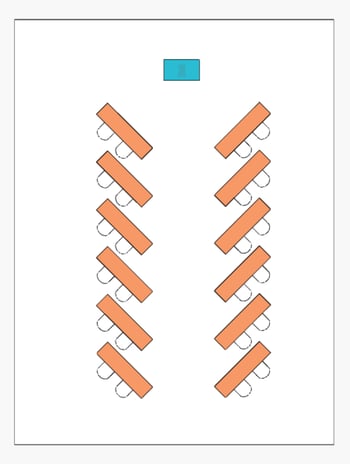
Tables and chairs are set similar to classroom style but they are angled to facilitate better line of vision with the front of the room.
Pros
- Allows for better discussion among participants
- Creates a more enclosed feel for the presenter and audience
- Facilitates interaction between the presenter and participants
- Great for note taking and use of electronic devices
- Useful when the focus is a presentation and food will be available
Cons
- Slightly better than classroom style for participants interacting with each other but still not great
- Line of vision may still be limited
Best For
Cheveron style is similar to a classroom style arrangement so it will also be great for training sessions and workshops and activities requiring note taking
Conference or Boardroom Style
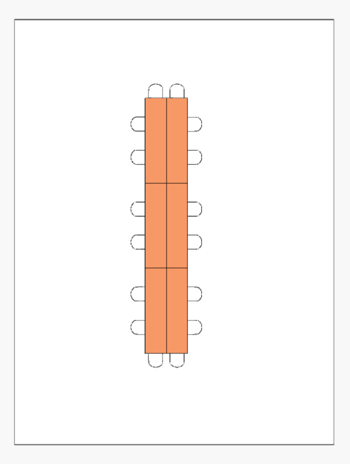
A single rectangular or oval table with chairs placed around the perimeter facing each other
Pros
- Allows for direct interaction among participants
- Direct line of site with participants
- Great for using laptops and electronic devices, note taking, and consumption of food
Cons
- When presenting not all participants may have a clear view of slides or visual materials.
- Too many people can actually decrease interaction
Best For
Conference style is best for agenda focused meetings, conference breakout sessions, brainstorming and open discussions. It is also a good layout for video conferencing.
Hollow Square
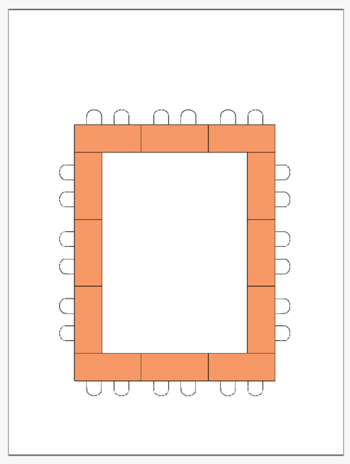
Rectangular tables are placed in a square with open space in the middle. Chairs placed around the perimeter.
Pros
- The hollow space in the middle allows a group leader or moderator an easy way to navigate among the tables.
- Facilitates easy communication and interaction among participants
Cons
- Participants can be easily distracted when using their electronic devices
- Some participants may not have a clear line of site to view presentations
Best For
This style of seating provides similar participant dynamics as the conference style layout. Unlike conference style layouts it is useful for minimizing status differences since there is no "head of the table" This style of seating is great for agenda focused meetings, discussions and brainstorming.
Theater or Auditorium
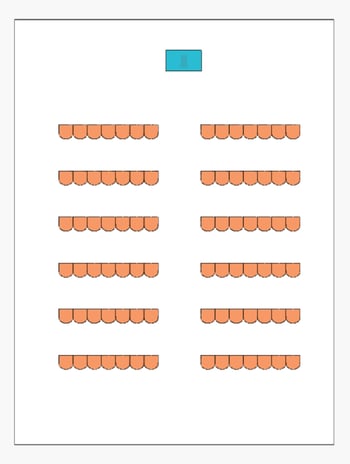
All chairs are set in rows facing the front of the room with no tables. There is typically an aisle down the center to allow easy access to center seats.
Pros
- Maximizes the number of participants that can fit in a space
- Great for passive learning and entertainment
Cons
- Not good for note taking
- Not good for longer events
- Minimizes interaction with presenter or other participants
- Attendees have a tendency to spread out leaving gaps and empty chairs.
- May not be as comfortable for attendees
Best For
Theater style is best for large groups where interaction between participants is minimal. Presentations, performances, lectures and annual meetings are typically best arranged in theater style.
U shape
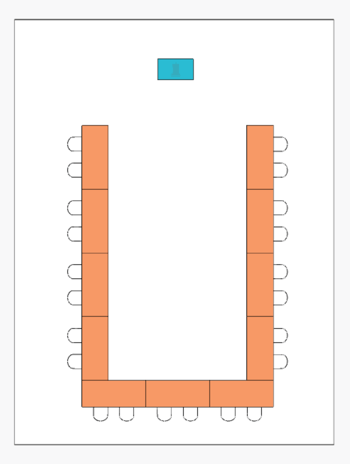
Tables are placed in a U with one end open. Chairs are placed around the perimeter
Pros
- The presenter can more closely engage with participants than they can in conference style arrangements
- Good participant interaction with each other
- Having tables facilitates note taking, using devices and consuming food and drink
Cons
- Seating capacity of the room is not maximized
- Majority of the participants are viewing the presenter from the side which may be uncomfortable in longer sessions.
Best For
U shape is best for interactive workshops, trainings and meetings.
The layouts for your events will have a huge impact on what the attendees will take away. It should not be left to chance. We hope the information about these 8 standard seating styles will help you decide how to setup your next amazing event. What seating styles do you use everyday. Leave us a comment below and let us know.
Mazévo is an easy to use room scheduling platform. With Mazévo all event details are managed in one system that is accessible anywhere you are on both desktop and mobile devices.
